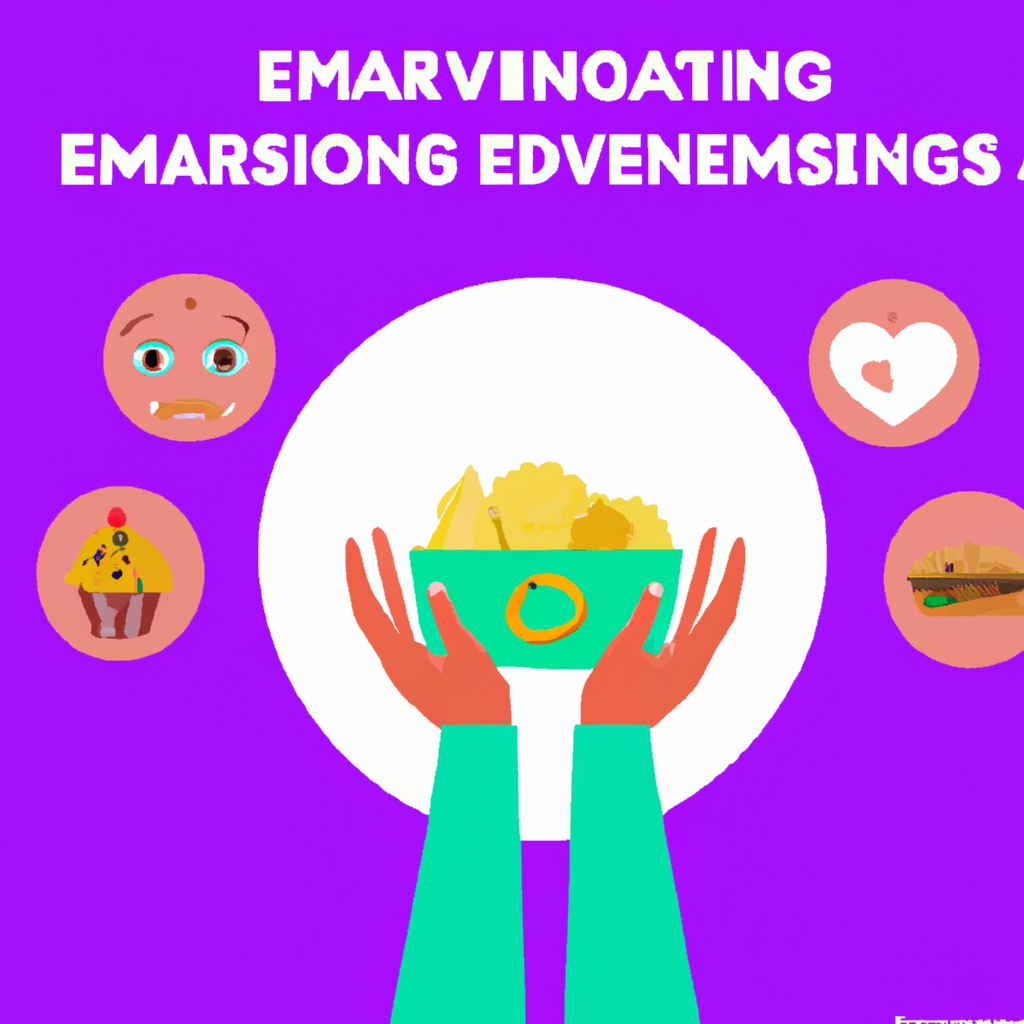Cravings and emotional eating can often become hurdles on the path to a healthier lifestyle. So, how can you effectively manage these challenges? This article shares valuable tips and strategies to help you curb cravings and overcome emotional eating. With a friendly, approachable tone, we’ll explore practical methods that anyone can implement to regain control of their relationship with food. From mindful eating techniques to finding healthy alternatives, get ready to discover a range of empowering solutions that will support you on your journey towards a balanced and nourished life.
Understanding Cravings and Emotional Eating
Cravings and emotional eating can often feel overwhelming and difficult to manage. Understanding the root causes of these behaviors is an essential step in gaining control over them. Cravings are usually a desire for a specific type of food, whereas emotional eating is the act of eating in response to emotions rather than hunger. These behaviors can often be connected and may stem from various factors such as stress, boredom, low mood, or anxiety.

Identifying Trigger Points
To effectively manage cravings and emotional eating, it is crucial to identify the triggers that lead to these behaviors. Start by becoming aware of your emotions and the situations in which you tend to turn to food for comfort. Are there certain times of day or specific events that trigger cravings? Identifying these trigger points will allow you to develop strategies to address them more effectively.

Practical Tips for Managing Cravings
Managing cravings can be challenging, but with the right strategies, it is possible to overcome them. Here are some practical tips to help you tackle your cravings head-on:
1. Practice Mindful Eating
One effective method for managing cravings is practicing mindful eating. This involves being fully present and aware of your sensory experience while eating. Slow down, savor each bite, and pay attention to how the food tastes, smells, and feels in your mouth. By practicing mindful eating, you can learn to distinguish between physical hunger and emotional cravings, helping you make more conscious choices.
2. Engage in Regular Physical Activity
Regular physical activity is not only beneficial for your physical health but can also help manage cravings and emotional eating. Exercise releases endorphins, which boost your mood and reduce stress levels. Engaging in activities you enjoy, such as walking, swimming, or dancing, can distract you from cravings and provide a healthier outlet for managing your emotions.
3. Plan and Prepare Healthy Meals
One effective way to manage cravings is to plan and prepare healthy meals ahead of time. When you have nutritious meals readily available, you are less likely to turn to unhealthy options when cravings strike. Take the time to plan your meals for the week, make a grocery list, and ensure you have nutritious ingredients on hand. This way, you are more likely to make positive choices when faced with cravings.
4. Keep a Food Diary
Keeping a food diary can be a powerful tool for managing cravings and emotional eating. By writing down everything you eat and your associated emotions, you can gain valuable insights into your eating patterns. This practice helps you identify triggers, recognize emotional connections to food, and develop healthier coping mechanisms to replace emotional eating.
5. Use Distraction Techniques
When a craving hits, distracting yourself is a useful technique to take your mind off food. Engage in activities that require your full attention, such as reading a book, doing a puzzle, practicing a hobby, or talking to a friend. By redirecting your focus, you can divert your thoughts away from the craving, making it easier to resist the temptation.
6. Find Healthy Alternatives
Sometimes cravings can be satisfied by finding healthier alternatives to the foods you desire. For example, if you’re craving something sweet, opt for a piece of fruit or a small portion of dark chocolate. If you’re craving something crunchy, try snacking on raw vegetables or air-popped popcorn. Finding healthier substitutes allows you to enjoy similar flavors and textures while making more nutritious choices.
7. Practice Self-Care and Healthy Coping Mechanisms
Taking care of yourself and finding healthy coping mechanisms is crucial when managing cravings and emotional eating. Engaging in activities that bring you joy, reduce stress, and promote relaxation can help prevent or alleviate emotional eating. This could include practicing mindfulness or meditation, taking a warm bath, reading a good book, or engaging in hobbies that you enjoy. Focus on self-care and develop a toolbox of healthy coping mechanisms to turn to when cravings or emotional triggers arise.
By implementing these practical strategies, you can gain a better understanding of your cravings, identify trigger points, and develop effective techniques for managing emotional eating. Remember, it’s a journey, and it’s okay to have setbacks along the way. Be gentle with yourself, forgive any slip-ups, and keep striving for progress. With time and persistence, you can gain control over cravings and cultivate a healthier relationship with food and your emotions.



